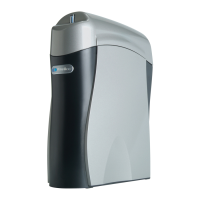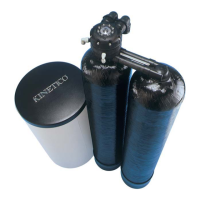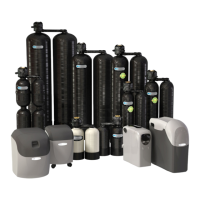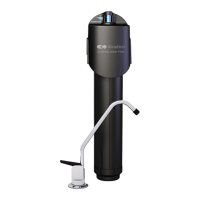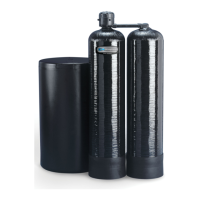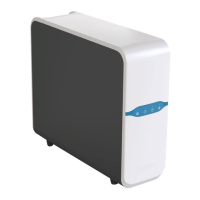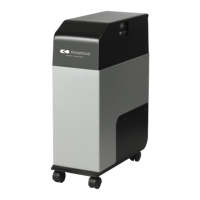TQ Series Technical Manual
Page 25 Operation and Maintenance 9.9.04
Rev. 5
No accumulator tank A stable pressure signal is required for the unit to shut
off properly. In some cases, only using tubing to
connect the TQ unit to an atmospheric storage tank may
not provide enough volume in the line to hold the
pressure signal. The addition of an accumulator tank
(less than 1 gallon) will resolve this issue.
Accumulator tank lost air precharge Pump up tank air pressure to 7 psi. Check for cause of
failure.
Prefilter fouled Replace.
Frequent Membrane Cleaning Required
Ineffective cleaning solution Silica treatment requires caustic cleaners that are
heated to 90
o
F for maximum effectiveness. Hardness
contamination is cleaned with acid chemistries.
Improper cleaning procedures Temperature, flow rate, time and chemistry must all be
matched to the specific foulant being cleaned. Improper
procedure will result in poor cleaning cycles.
Damaged membranes Replace membranes.
Poor Production Volume
System not operating within specifications Confirm system operating parameters. See Operating
Specifications table. The system should run at provided
permeate, and reject flow rates. Also check the system
pressure.
Cold Temperature Inlet temperature is less than 77
o
F. Cold water will have
a lower production rate. See sizing charts for different
temperatures.
Fouled membranes Check permeate quality with a hand-held meter. Also
check permeate flow rate.
Inlet quality changes Analyze the TQ Systems’ feed for chlorine, hardness,
temperature and SDI.
Tank precharge pressure too high Relieve to 7 psi. Check pressure while system is empty.
Tank lost air precharge Pump up air precharge to 7 psi and check for cause of
failure. Note: tank must be empty to add more
precharge.
Prefilter cartridge plugged Replace cartridge.
Insufficient reject flow rate See “No reject water.”
Membrane fouled Determine and correct cause; replace membrane. A new
feed analysis may be required.
Insufficient storage capacity Check charts in Options Section for draw down
capacity.
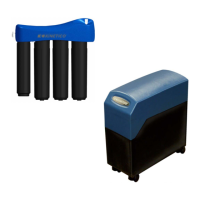
